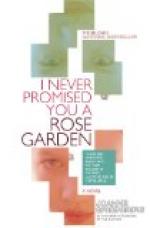To begin, with one single exception, they have drawn upon the wild for this garden, even as you are doing in the restoration of your knoll. Back of the cottage a dozen yards is a sand ridge covering some fairly good, though mongrel, loam, for here, as along most of the coasts of sounds and bays, the sea, year by year, has bitten into the soil and at the same time strewn it with sand. Considering this as the garden boundary, a windbreak of good-sized bayberry bushes has been placed there, not in a stiff line, but in blended groups, enclosing three sides, these bays being taken from a thicket of them farther toward the marshes.
An alley from the back porch into this enclosure is bordered on either side by bushes of beach plum, that, when covered with feathery white bloom in May, before the leaves appear, gives the sandy shore the only orchard touch it knows. Of course the flowering period is over when the usual shore season begins, though nowadays there is no off time—people go to shore and country when they are moved; yet the beach plum is a picturesque bush at any time, especially when, in September, it is loaded with the red purple fruit. In the two spaces on either side the alley the sand is filled with massed plants that, when a little more time has been given them for stretching and anchoring their roots, will straightway weave a flower mat upon the sand.
Down beyond the next point, one day last autumn, Horace and Sylvia found a plantation of our one New England cactus, the prickly pear (Opuntia opuntia). We have it here and there in our rocky pasture; but in greater heat and with better underfeeding it seemed a bit of a tropical plain dropped on the eastern coast. Do you know the thing? The leaves are shaped like the fans of a lobster’s tail and sometimes are several-jointed, smooth except for occasional tufts of very treacherous spikes, and of a peculiar semitranslucent green; the half-double flowers set on the leaf edges are three inches across and of a brilliant sulphur-yellow, with tasselled stamens; the fruit is fleshy, somewhat fig-shaped, and of a dark red when ripe—altogether a very decorative plant, though extremely difficult to handle.
After surveying the plantation on all sides, the tongs used by the oyster dredges suggested themselves to Horace, and thus grasped, the prickly pears were safely moved and pegged in their new quarters with long pieces of bent wire, the giant equivalents of the useful hairpins that I recommended for pegging down your ferns.
Now the entire plot of several yards square, apparently untroubled by the removal, is in full bloom, and has been for well-nigh a month, they say, though the individual blossoms are but things of a day. Close by, another yellow flower, smaller but more pickable, is just now waving, the rock rose or frostweed, bearing two sorts of flowers: the conspicuous yellow ones, somewhat resembling small evening primroses, while all the




